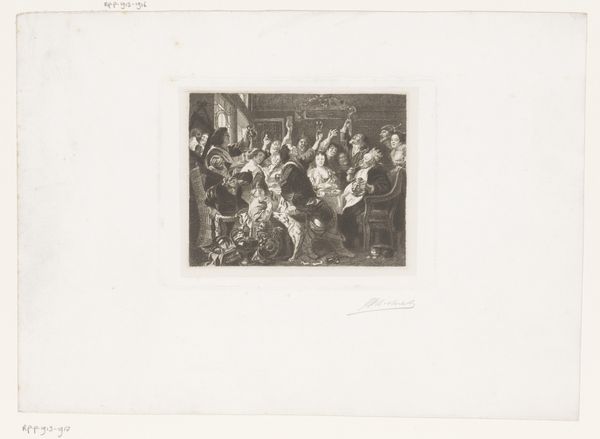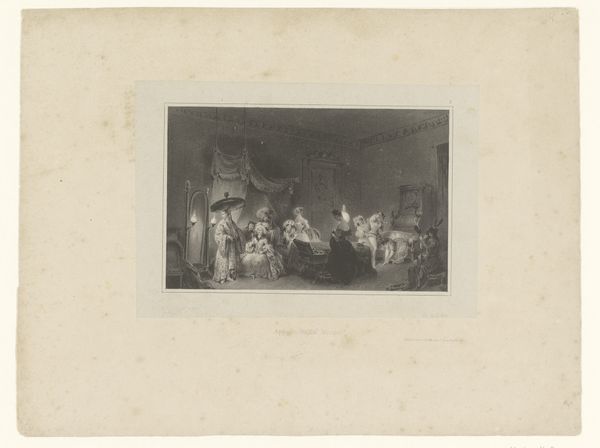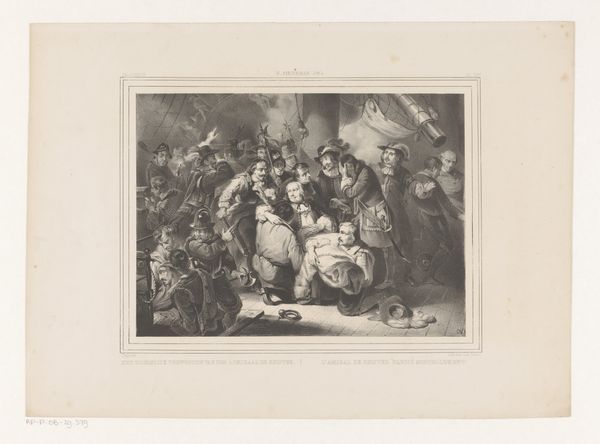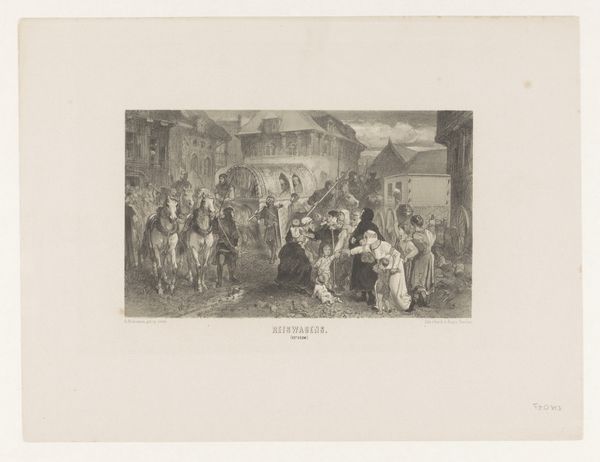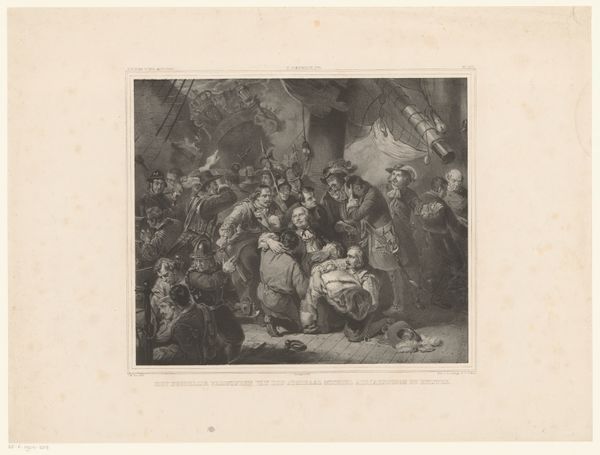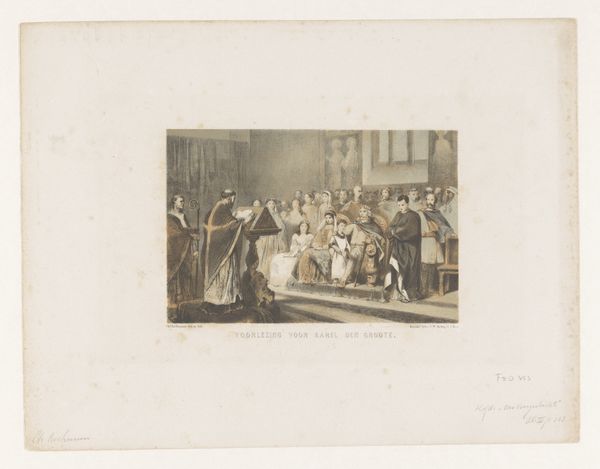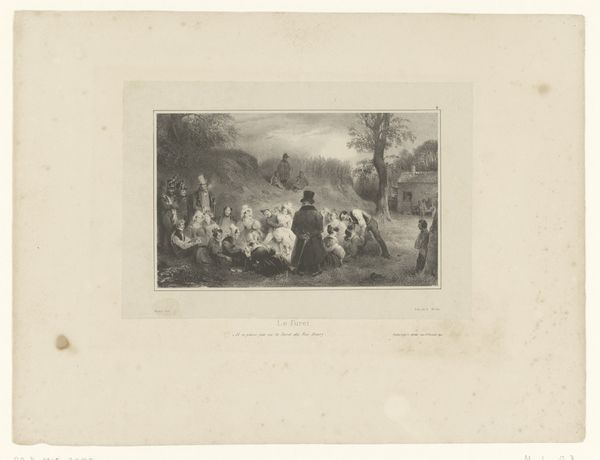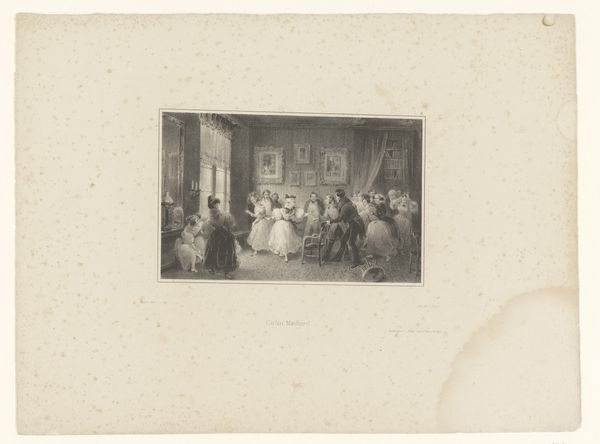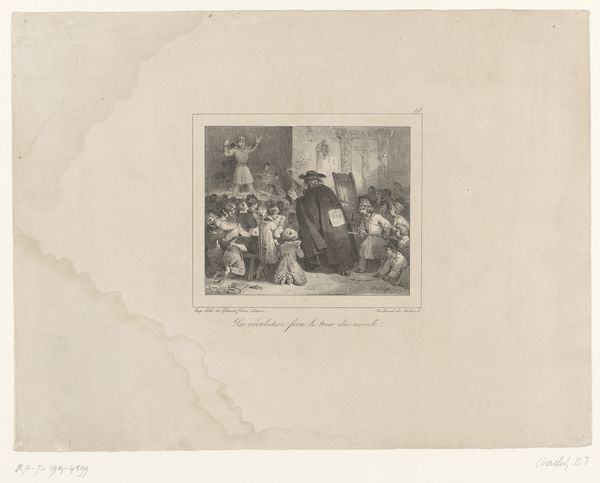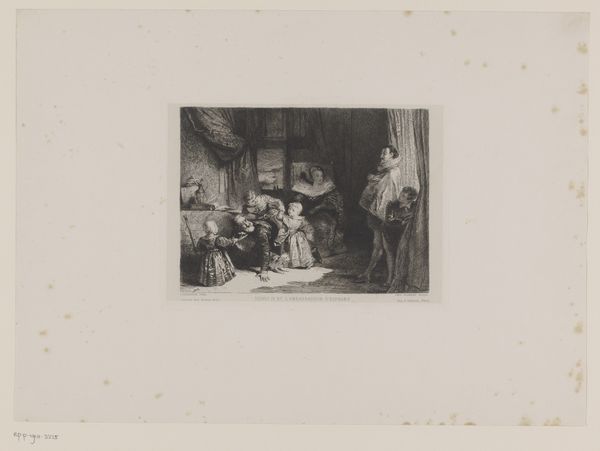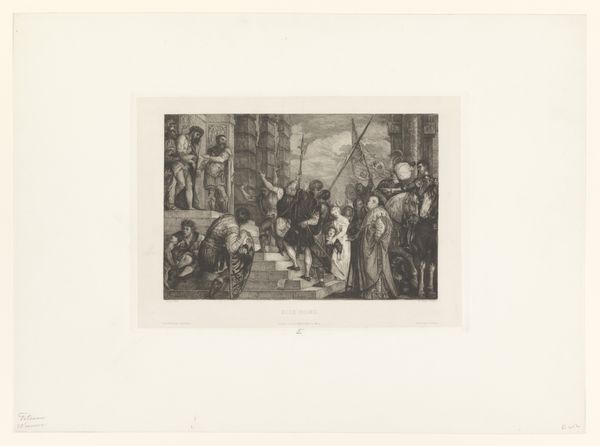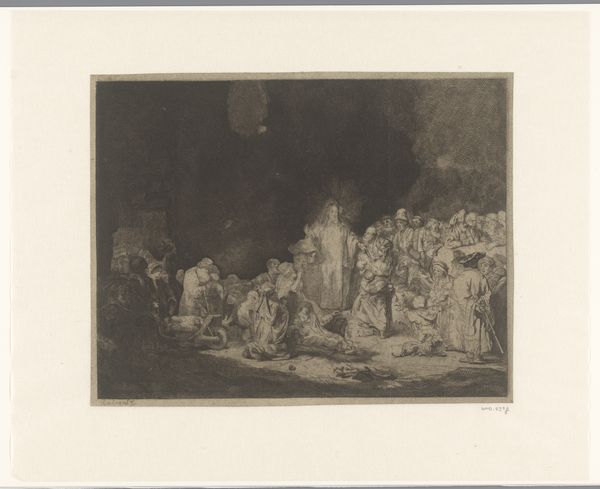
print, paper, engraving
#
paper non-digital material
#
narrative-art
# print
#
figuration
#
paper
#
form
#
romanticism
#
line
#
history-painting
#
paper medium
#
engraving
#
monochrome
Dimensions: height 313 mm, width 429 mm
Copyright: Rijks Museum: Open Domain
Editor: This is "Moord op Lodewijk van Bourbon, bisschop van Luik," or "Murder of Louis of Bourbon, Bishop of Liège," an engraving by Adolphe Mouilleron from 1844. It's a busy composition and incredibly dramatic, all in monochrome. How do you interpret this work? Curator: The drama definitely grabs you, doesn't it? This print depicts a very specific, and violent, historical event, the murder of Louis of Bourbon. But it also operates within a broader Romantic framework. Think about what Romanticism valued: emotion, the power of the past, and often, a critique of established power structures. Do you see any of that at play here? Editor: I guess so. The event itself is history, of course. And there's a real sense of heightened emotion. It does feel like the Bishop is being martyred by the mob. Curator: Precisely! And Mouilleron is choosing to depict a moment of intense social upheaval, a direct challenge to the Bishop’s authority, both religious and political. This was a period of revolution across Europe; power dynamics were constantly being renegotiated. Consider who is missing from the picture - where are the symbols of royal or papal authority? How does that absence shape our understanding? Editor: That's true. There's just chaos, but focusing on the vulnerable people being impacted in the community gives the piece even more resonance, I think. Curator: Exactly, and it challenges viewers to really analyze the dominant and surbodinate relationships that define culture, even today. What do you think about how focusing on a religious man in an act of violence shapes contemporary conversation around politics, religion, and gender today? Editor: I didn’t even consider gender before but now I do think about all the potential interpretations of the characters presented and their relation to authority. Curator: Ultimately, this print isn’t just about a historical event; it’s about the ongoing struggles for power, justice, and self-determination within society. It has given us both a lot to think about, right?
Comments
No comments
Be the first to comment and join the conversation on the ultimate creative platform.
